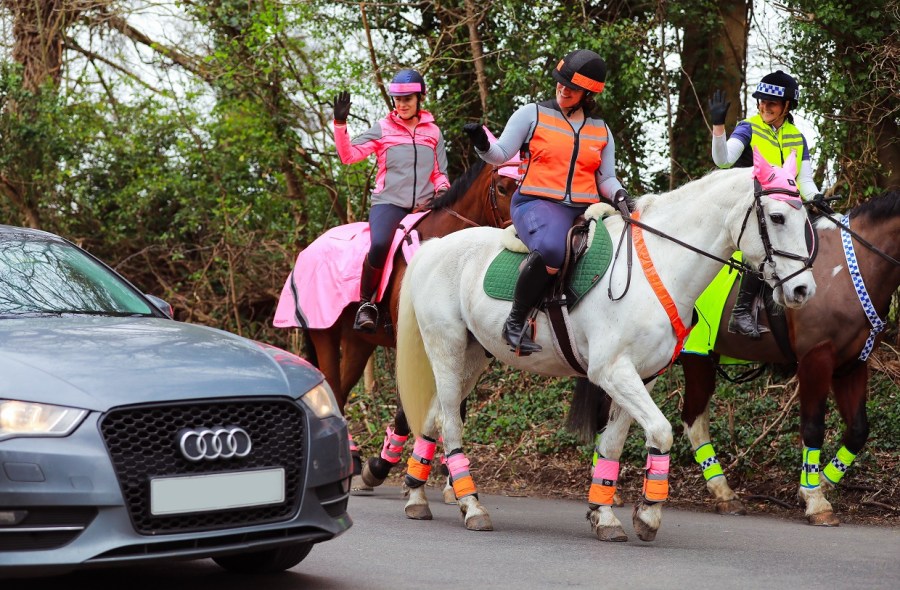Increased and improved off-road routes and a set of recognised hand signals for riders are among the suggestions for improved road safety for equestrians.
These action points follow a study which revealed the “shocking” percentage of riders who feel stress and risk while on the roads.
Dr Dee Pollard, the author of the study, said the suggestions would require a holistic, collaborative effort of a large number of road safety stakeholders at both local authority and governmental levels.
Dr Pollard identified the following action points:
- Striving for a transport system which is inclusive of, and promotes, equestrian safety. For example, warning signage of equestrian activity for motorists, reduction of speed limits on rural roads and those frequently used by equestrians, non-slippery road surfaces and safe road crossings.
- Improved enforcement of road safety legislation.
- Equestrianism recognised and promoted by governments and local authorities as a legitimate type of active travel and form of green exercise.
- The provision of extensive and better connected off-road rights of way for equestrians which would allow them to plan safer and more frequent exercise with their horses and that were user-friendly and accessible for equestrians with disabilities.
- Having standardised equestrian hand signals that are accepted by the traffic department and included in the Highway Code.
- Researching ways to disseminate knowledge of road systems, safety rules, recommended ways to mitigate risk and awareness of others on roads to different road user groups, both equestrian and non-equestrian, and how this knowledge could best be kept fresh in people’s minds.
- Identifying the most effective ways to change the behaviour of road users around horses.
- Using awareness campaigns and advertising that humanises road users and helps break down any pre-existing stereotypes and helping bridge the disconnect between people using roads.
- Encouraging the use of evidence-based equitation methods which would help habituate the horse to traffic/roads and which have the potential to improve the relationship and trust between a horse and their handler.
The study was conducted in collaboration with the British Horse Society, who has recently launched its Horse i app.
The app allows riders and carriage drivers to easily report any incidents on the roads, and helps the charity build an accurate picture of the realities of the dangers faced by equestrians and their horses on UK roads.










